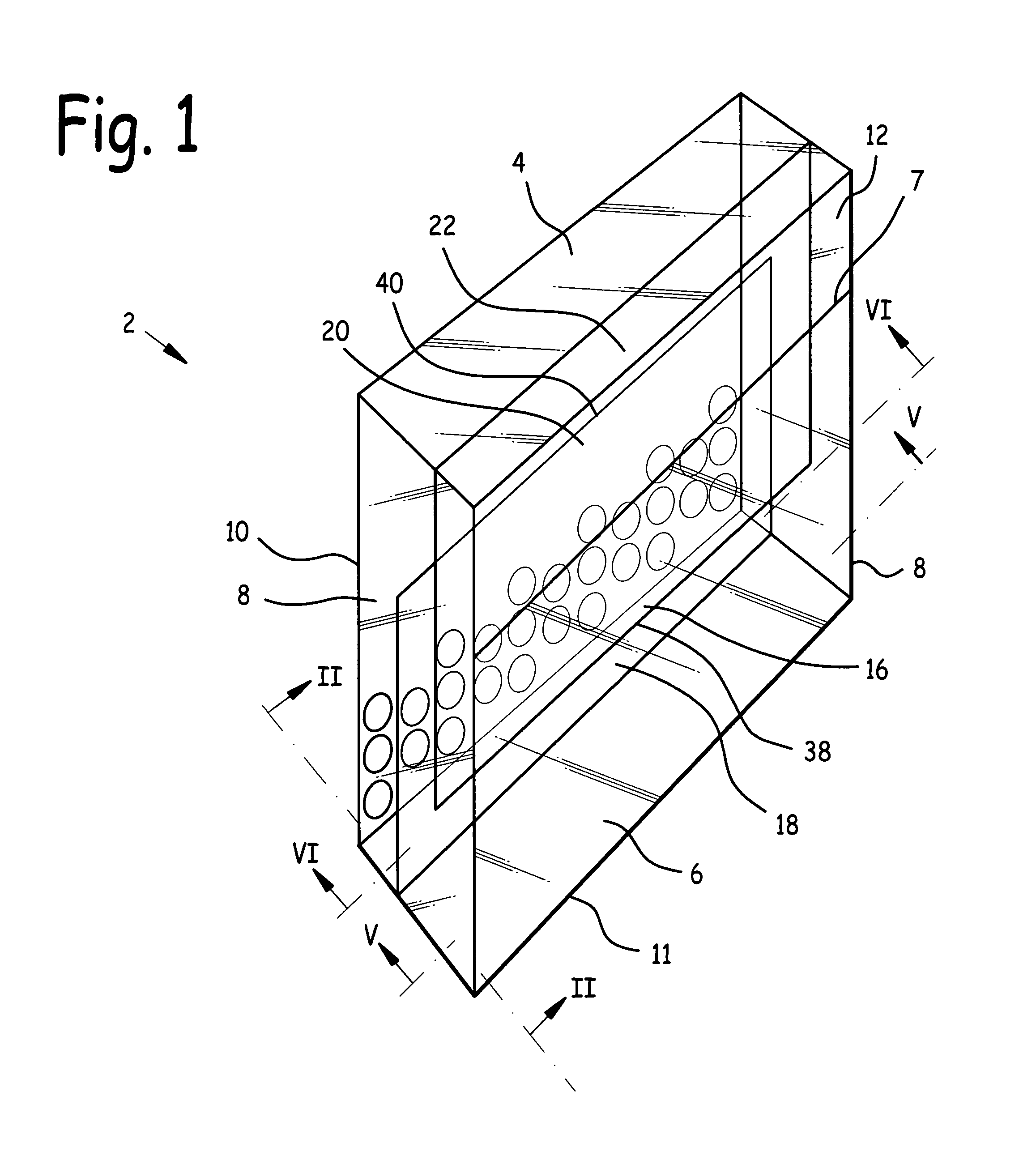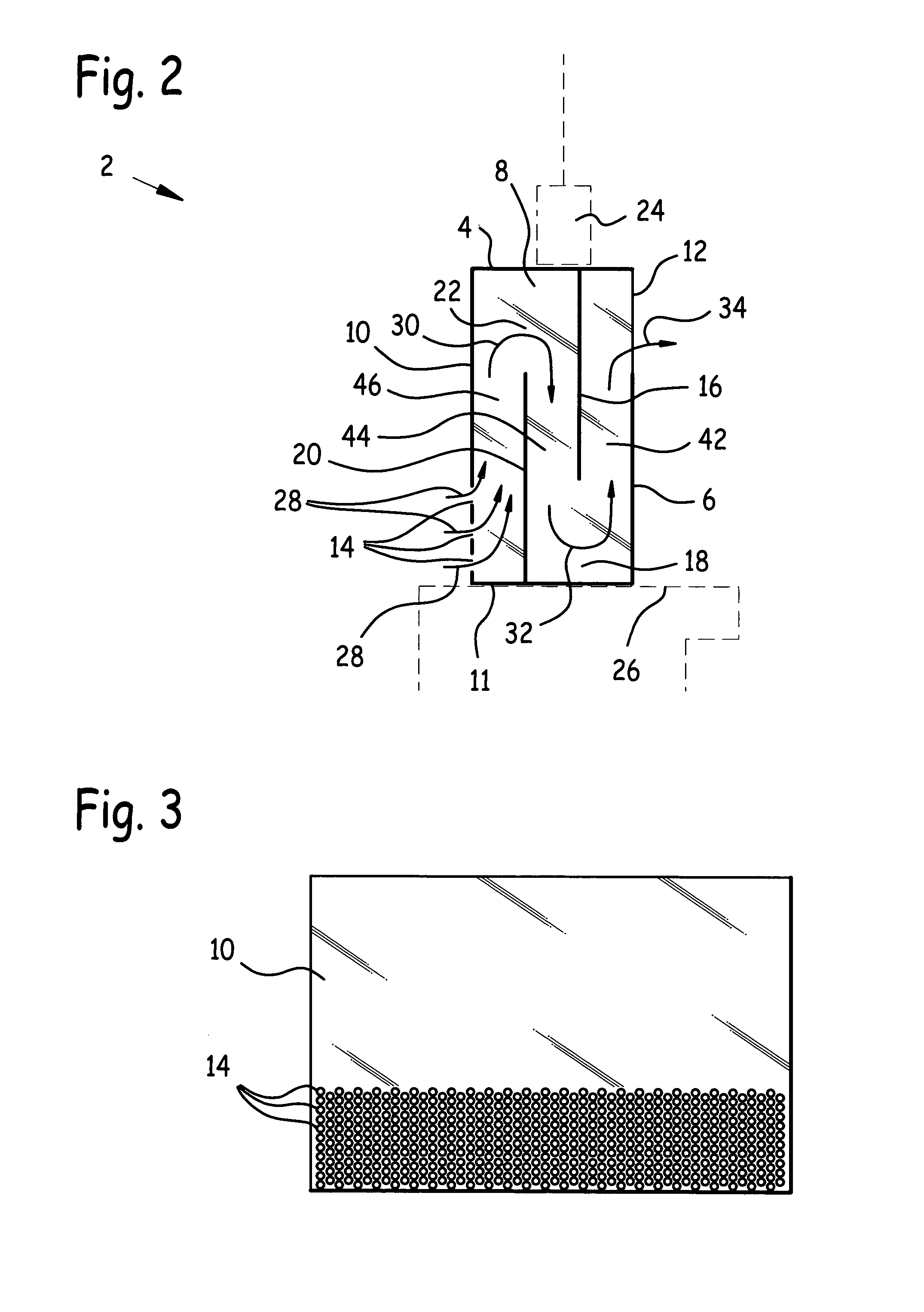Insect trap and method of use
a technology of insect traps and insects, applied in the field of insect traps, can solve the problems of affecting the removal of insects, affecting the availability of insects, and affecting the health of humans, so as to reduce the cost, increase the availability, and reduce the cos
- Summary
- Abstract
- Description
- Claims
- Application Information
AI Technical Summary
Benefits of technology
Problems solved by technology
Method used
Image
Examples
Embodiment Construction
[0026]Referring now to FIG. 1 we observe a front quarter elevated isometric view of insect trap 2. Insect trap 2 comprises roof 4 rigidly attached to rear wall 10 and side walls 8, front wall 6 rigidly attached along edges of side walls 8 opposite rear wall 10, and floor 11 rigidly attached along edges of front wall 6, rear wall 10, and side walls 8 opposite roof 4.
[0027]First divider 16 depends from roof 4, and is attached at either side to a side wall 8. Second divider 20 as attached to floor 11, and at either side to a side wall 8.
[0028]Front wall aperture 12 is disposed between front wall upper edge 7 and roof 4. First divider aperture 18 is disposed between first divider lower edge 38 and floor 11. Second divider aperture 22 is disposed between second divider upper edge 40 and roof 4. Rear wall apertures 14 are disposed in rear wall 10.
[0029]Referring now also to FIG. 2, a side cross-sectional view of insect trap 2 taken at section II-II of FIG. 1, outer chamber 42 is defined b...
PUM
 Login to View More
Login to View More Abstract
Description
Claims
Application Information
 Login to View More
Login to View More - R&D
- Intellectual Property
- Life Sciences
- Materials
- Tech Scout
- Unparalleled Data Quality
- Higher Quality Content
- 60% Fewer Hallucinations
Browse by: Latest US Patents, China's latest patents, Technical Efficacy Thesaurus, Application Domain, Technology Topic, Popular Technical Reports.
© 2025 PatSnap. All rights reserved.Legal|Privacy policy|Modern Slavery Act Transparency Statement|Sitemap|About US| Contact US: help@patsnap.com



